M24 Chaffee — Best Light Tank of WWII?

Technology veritably exploded in the six years that encompassed the World War II. Whether your metric is small arms, combat aircraft, medicine or portable shelf-stable food, the standard fare in 1945 would have been unimaginable in September of 1939 when the Wehrmacht first rolled across the Polish frontier. The world had never seen such extraordinary growth before.
At the onset of hostilities, the state of the art in American light armor was the boxy M3 Stuart. This 33,500-pound sportscar of a tank sported a piddly little 37mm cannon that was obsolete soon after its introduction. The M3 had a top road speed of 36 mph and a range of 100 miles. The Stuart’s armor ranged between 0.375 and 2 inches and was mostly flat and square. That made it susceptible to most German anti-armor weapons of the day. By 1943, it was obvious we could do better.
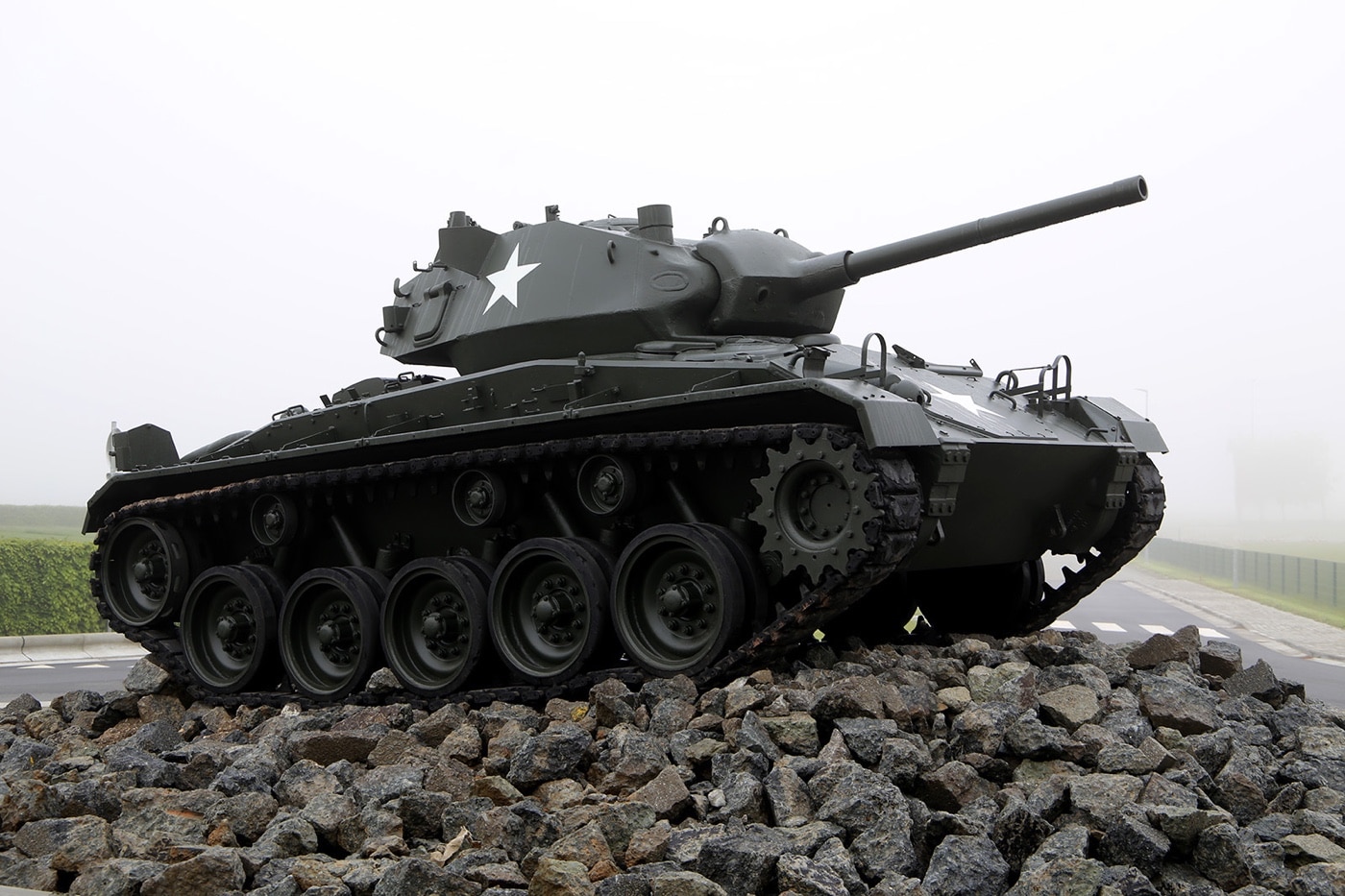
The M24 Chaffee Tank
Developed as a result of hard lessons learned in combat, the M24 Chaffee addressed most of the Stuart’s well-documented shortcomings. The basic chassis utilized a torsion bar suspension system that gave a smoother ride over rough terrain when compared to the legacy vertical volute suspension used on most previous American tanks. Range and top speed were comparable to the Stuart it was replacing, and both tanks used the same Cadillac engine. In addition to enhancing crew comfort, the improved running gear made the Chaffee a more stable gun platform.
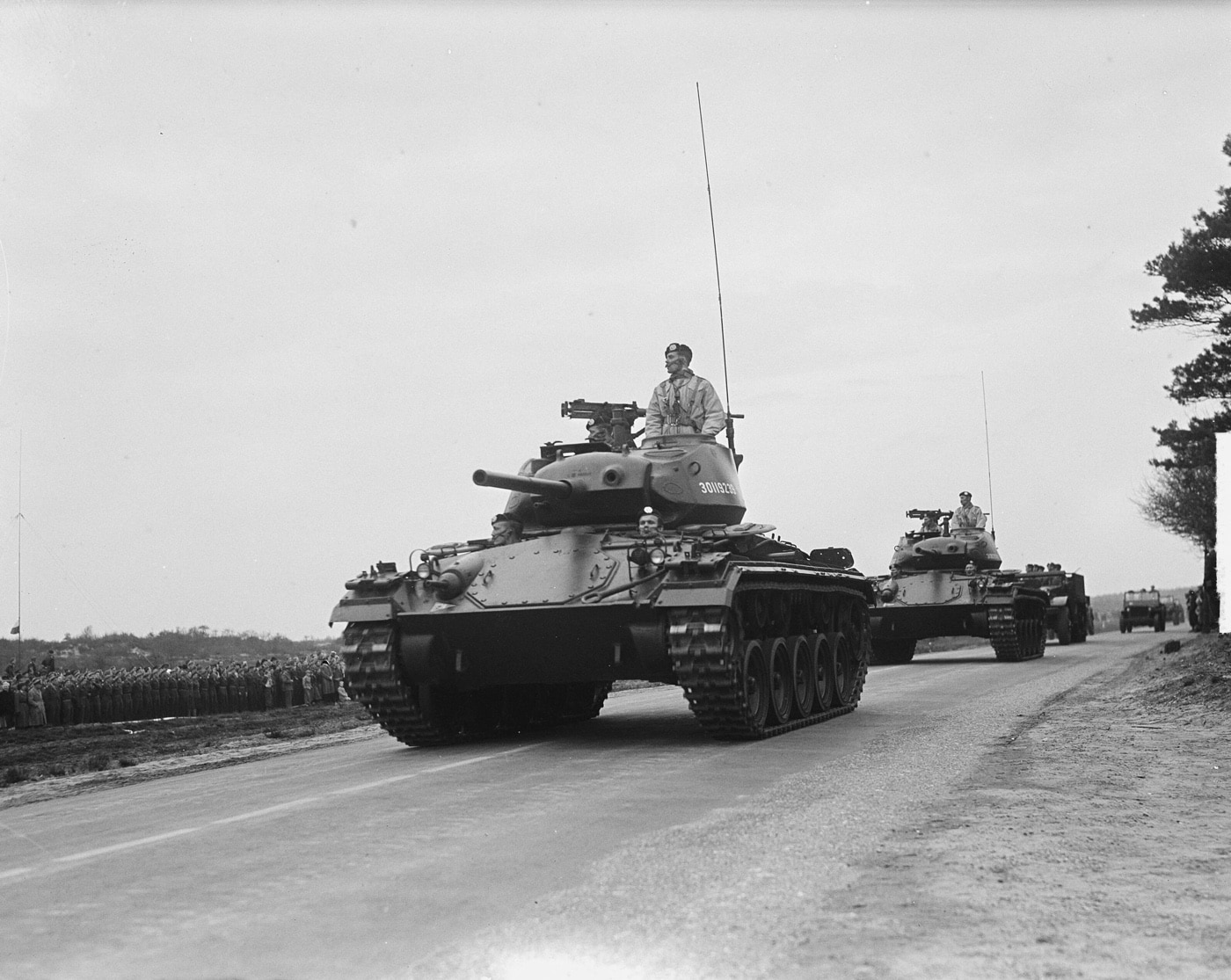
The diminutive 37mm gun was arguably the Stuart’s most glaring defect. By contrast, the M24 was fitted with a new lightweight 75mm gun pioneered aboard the B25H Mitchell bomber. This weapon was itself a derivative of the same M3 75mm gun used in the M4 Shermans of the day, only lightened and trimmed back for use in the Mitchell gunship. Once mounted in the M24, this large-bore cannon gave the Chaffee essentially the same offensive capabilities as the slower, heavier Sherman.
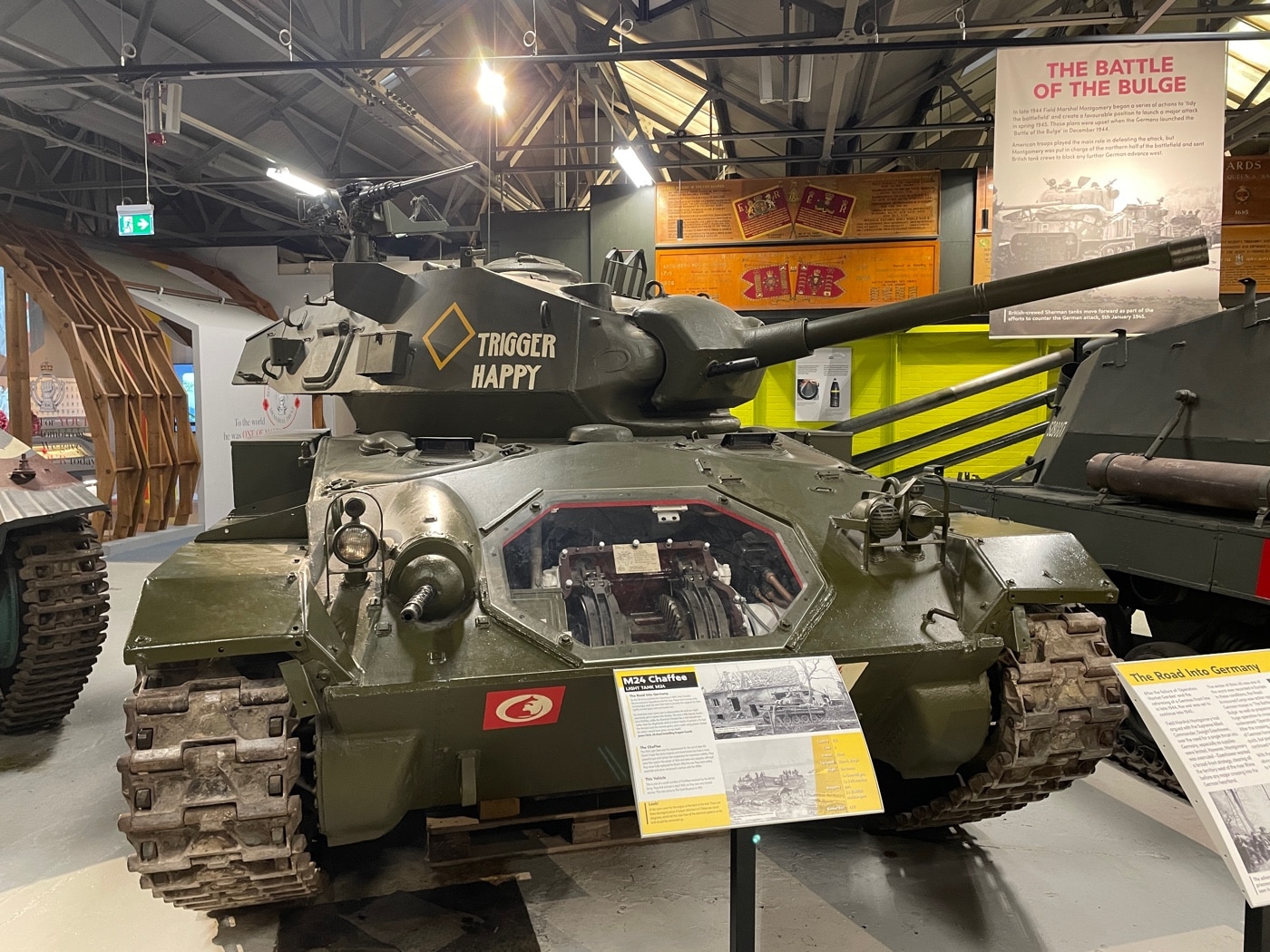
Hardened steel armor was about an inch thick all around and half again thicker across the gun mantlet. However, unlike that of the previous Stuart, the turret and hull of the M24 were sharply sloped. This both assisted in deflecting solid shot and increased the practical thickness of the armor plate.
Firepower
There was room for 48 of the 75mm main gun rounds to feed the lightened M6 cannon. The barrel was just shy of three meters long and produced a muzzle velocity of around 2,000 feet per second. Standard HE rounds packed 1.5 pounds of TNT explosive filler. T30 canister shot fired a cloud of steel balls akin to a giant shotgun for close-in defense against dismounted infantry. Capped armor-piercing rounds would penetrate 3.2 inches of rolled homogenous steel at a range of 500 yards.
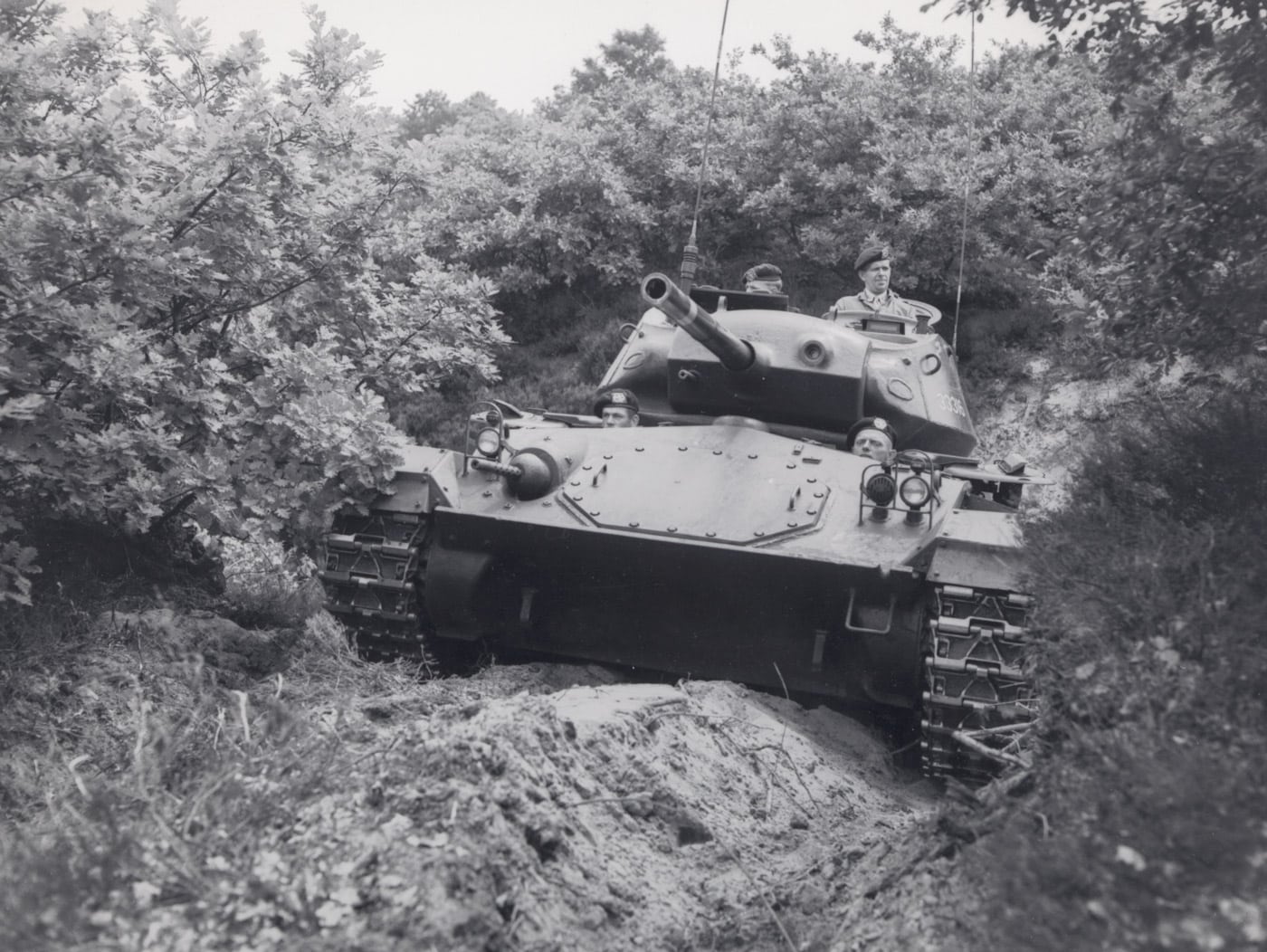
The Chaffee included one M1919A4 machine gun in a coaxial mount as well as a second .30-caliber Browning in a ball mount in the hull operated by the bow gunner. Standard stowage for these two weapons was 3,750 rounds. There was also an M2HB .50-cal. on the roof with 440 rounds for antiaircraft use. The M2 could obviously also be used against terrestrial targets as well, though it could not be fired while buttoned up.
American power transfer systems had come a long way in a few short years. The M24’s Hydramatic transmission offered eight forward speeds and four reverse. When slaved to a Twin Cadillac Series 44T24 powerplant, the M24 had plenty of spunk. The cumulative result was a fast and agile light reconnaissance tank.
Combat Cred
Cadillac delivered the first M24 Chaffee on 15 October, 1943. Army evaluators were so impressed they ordered 5,000 copies. Production began in 1944 at both Cadillac and Massey-Harris. The first M24 tanks landed in Europe in November of 1944, some four months after D-Day. By August of 1945, 4,731 Chaffees had been built. Unit cost was $39,653 apiece.
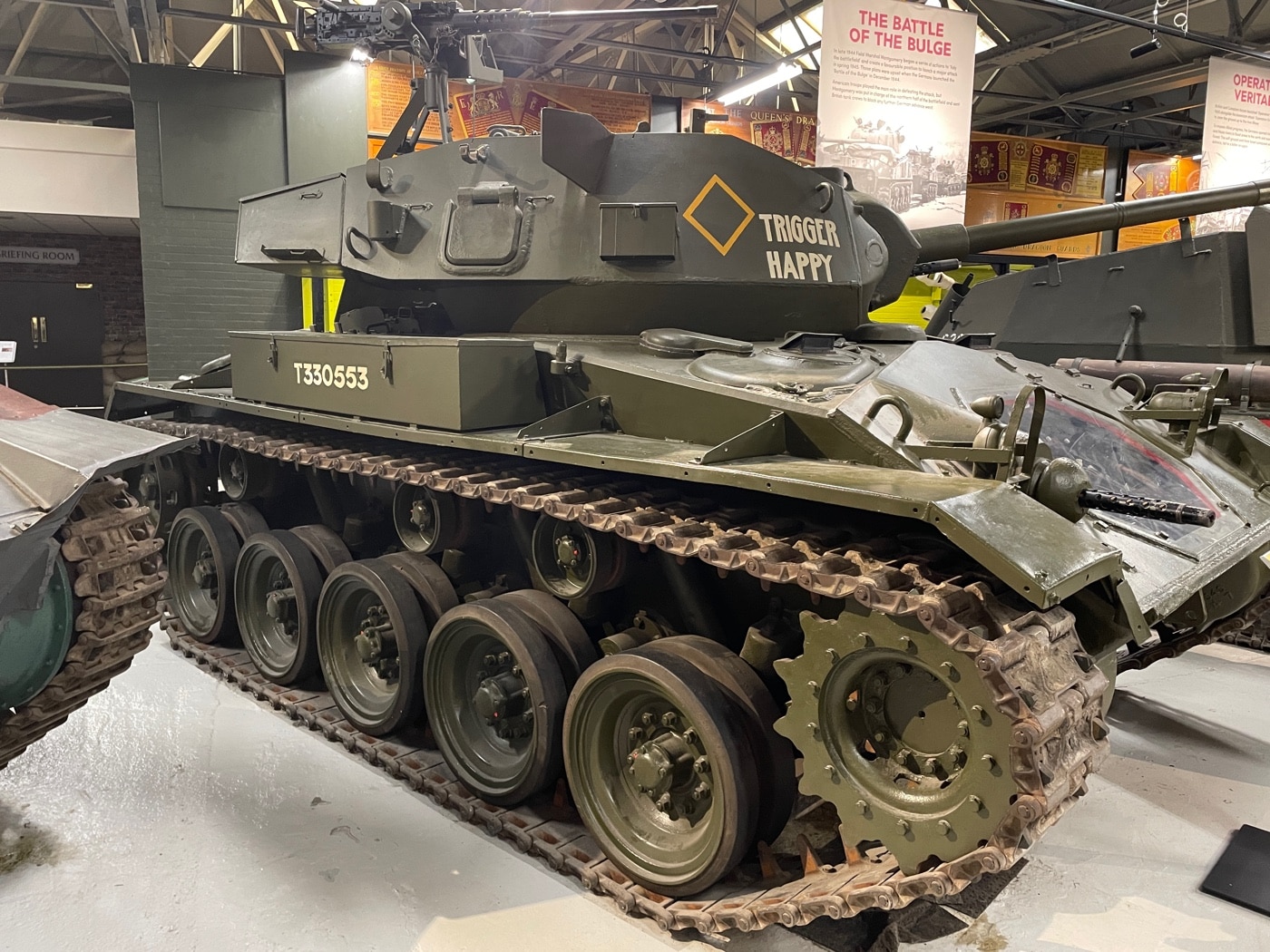
The first serious combat seen by the M24 was the Battle of the Bulge. These fresh armored vehicles were rushed into action to stem the German assault through the Ardennes. When used in the reconnaissance role as intended, the M24 acquitted itself well. The Chaffee was fast enough to scamper across the battlefield but could still slug it out from fixed positions nearly as well as the heavier Sherman. The enhanced mobility and ease of maintenance made the Chaffee popular with its crews.
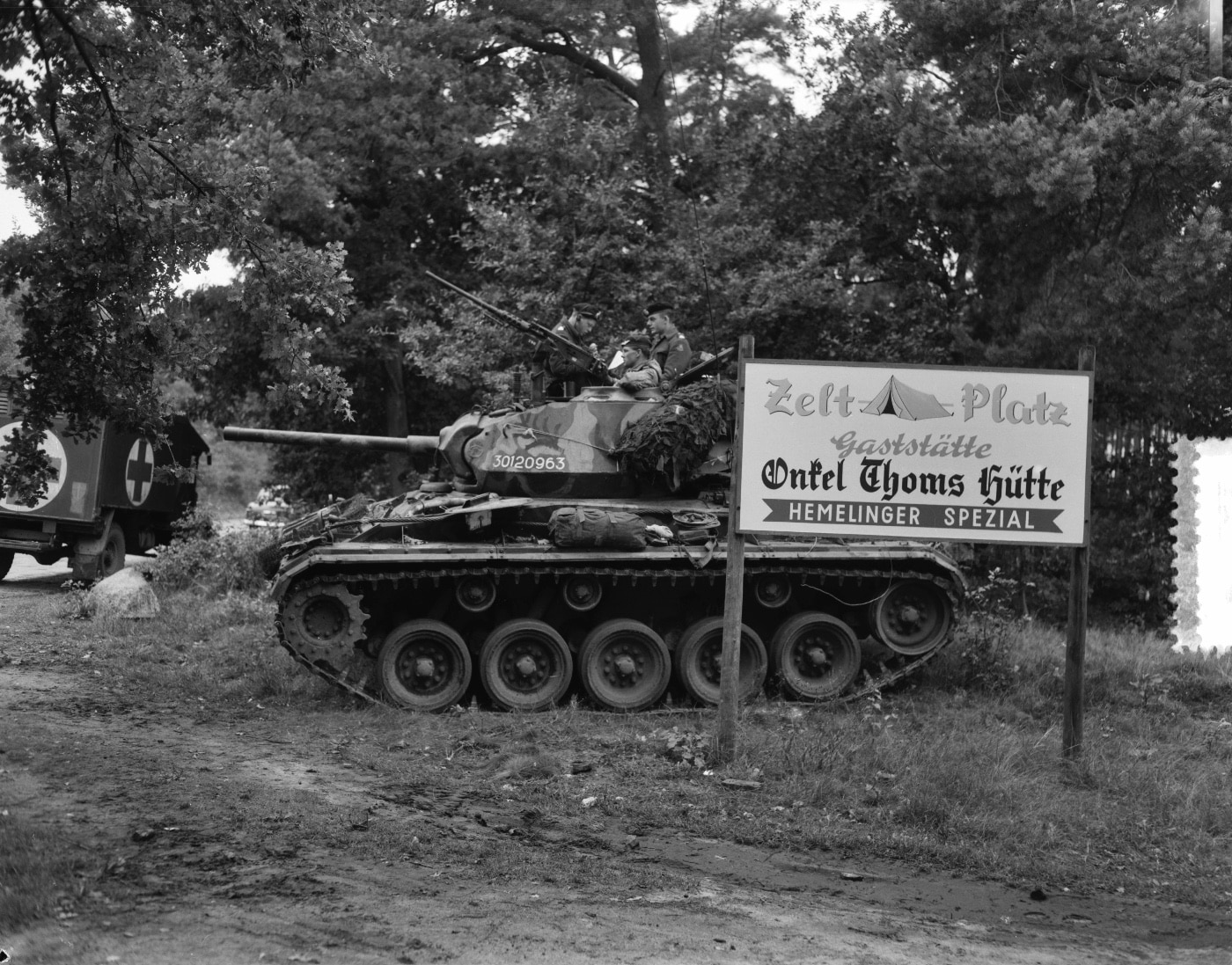
Many to most of the Chaffees arrived in theater too late to influence the outcome of the war. Several units did not exchange their Stuarts for Chaffees until after V-E Day. The Chaffee was vulnerable to any German tanks in active service at the end of the war as well as common anti-armor weapons like the Panzerschreck and Panzerfaust. However, its crews used the frisky little tank’s speed and agility to good advantage.
Post-War Ops
With WWII finally in the rearview mirror, untold thousands of Allied tanks were just set aside and ignored. Once things began to heat up across the Korean peninsula in 1950, Uncle Sam emergently pulled these old warhorses out of storage and threw them into battle. This did not end well.
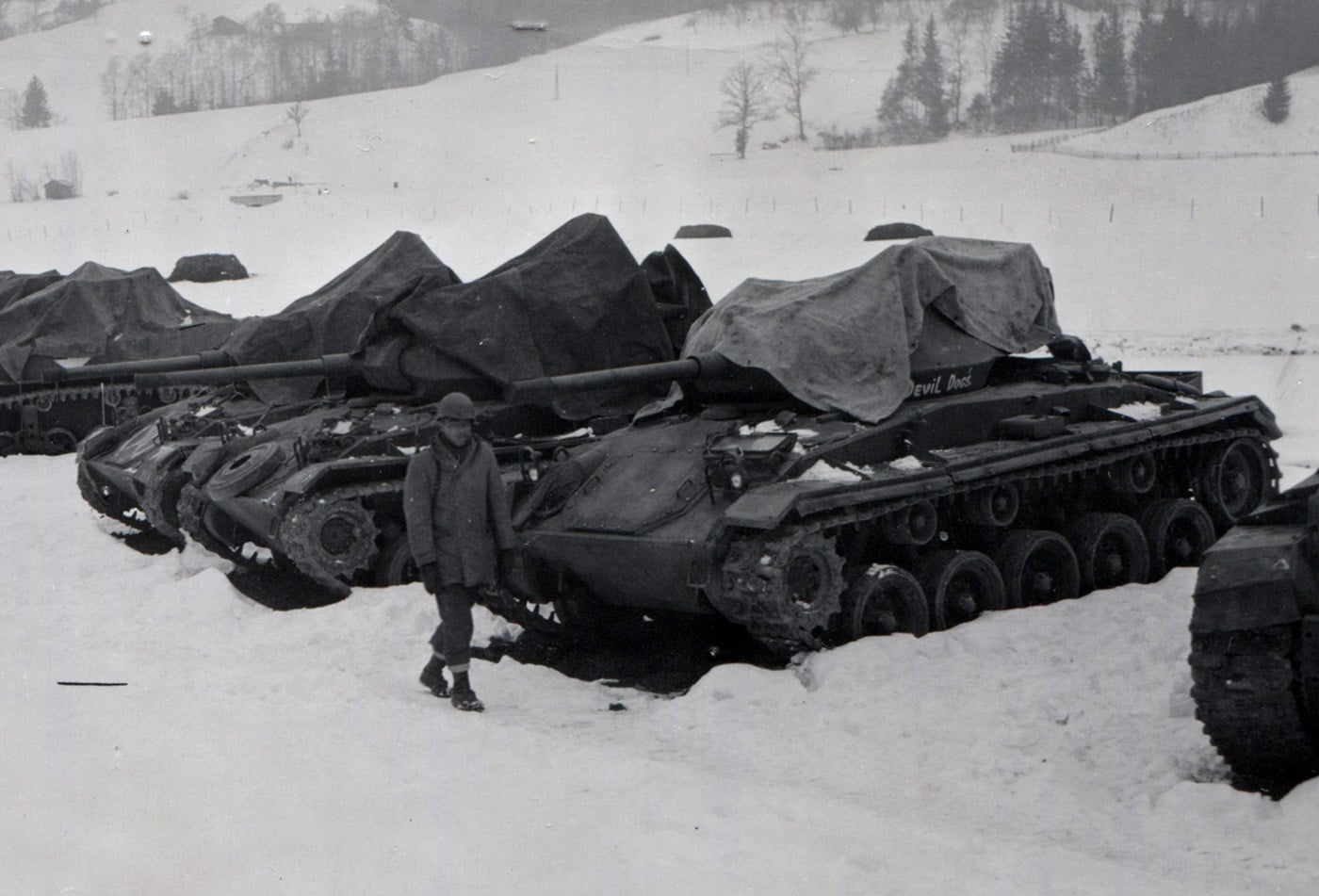
When war broke out on the Korean peninsula, there was a grand total of four tank battalions available for deployment to the battle zone. Most of the Chaffee tanks shipping out from Japan had been without a serious mission for years and were therefore in a poor state of repair. Once deployed to the frigid wastes of Korea, the guns and turret gear often failed. Able Company of the 78th Tank Battalion was the first American armored unit to deploy. A mere 30 days later, only two of their 14 Chaffees were still mission capable.
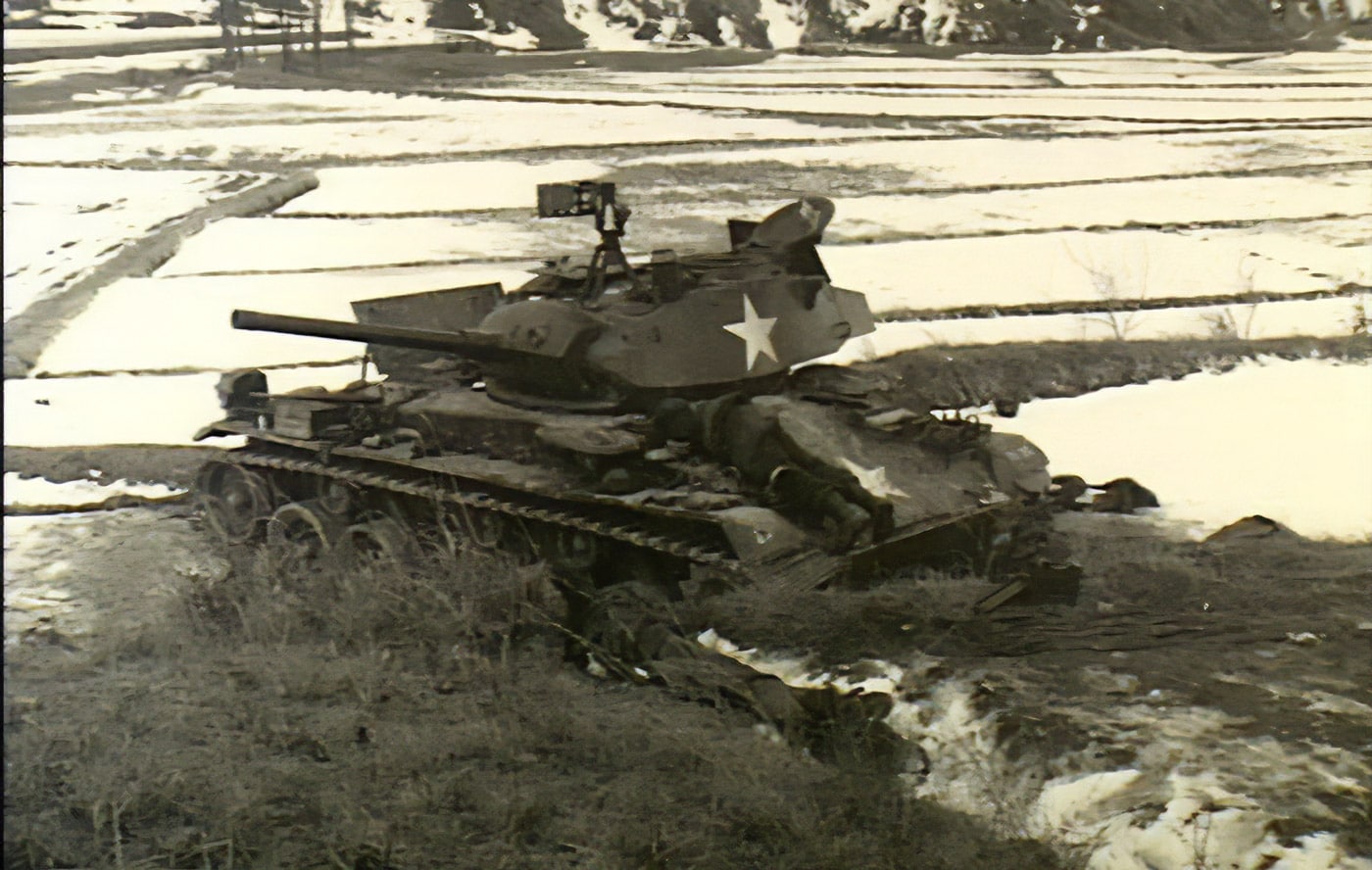
The short-barreled 75mm guns on the Chaffees performed poorly against the T-34/85 tanks the Russians had gifted the North Koreans. The lightly-armored Chaffees suffered at the hands of North Korean anti-tank weapons as well. However, heavier M4A3E8 Shermans soon arrived from the States, and the Chaffees were relegated to the reconnaissance roles for which they were originally designed. When these WWII-surplus Chaffees were finally employed properly, they excelled. The M24 was replaced in U.S. service by the M41 Walker Bulldog tank in 1953.
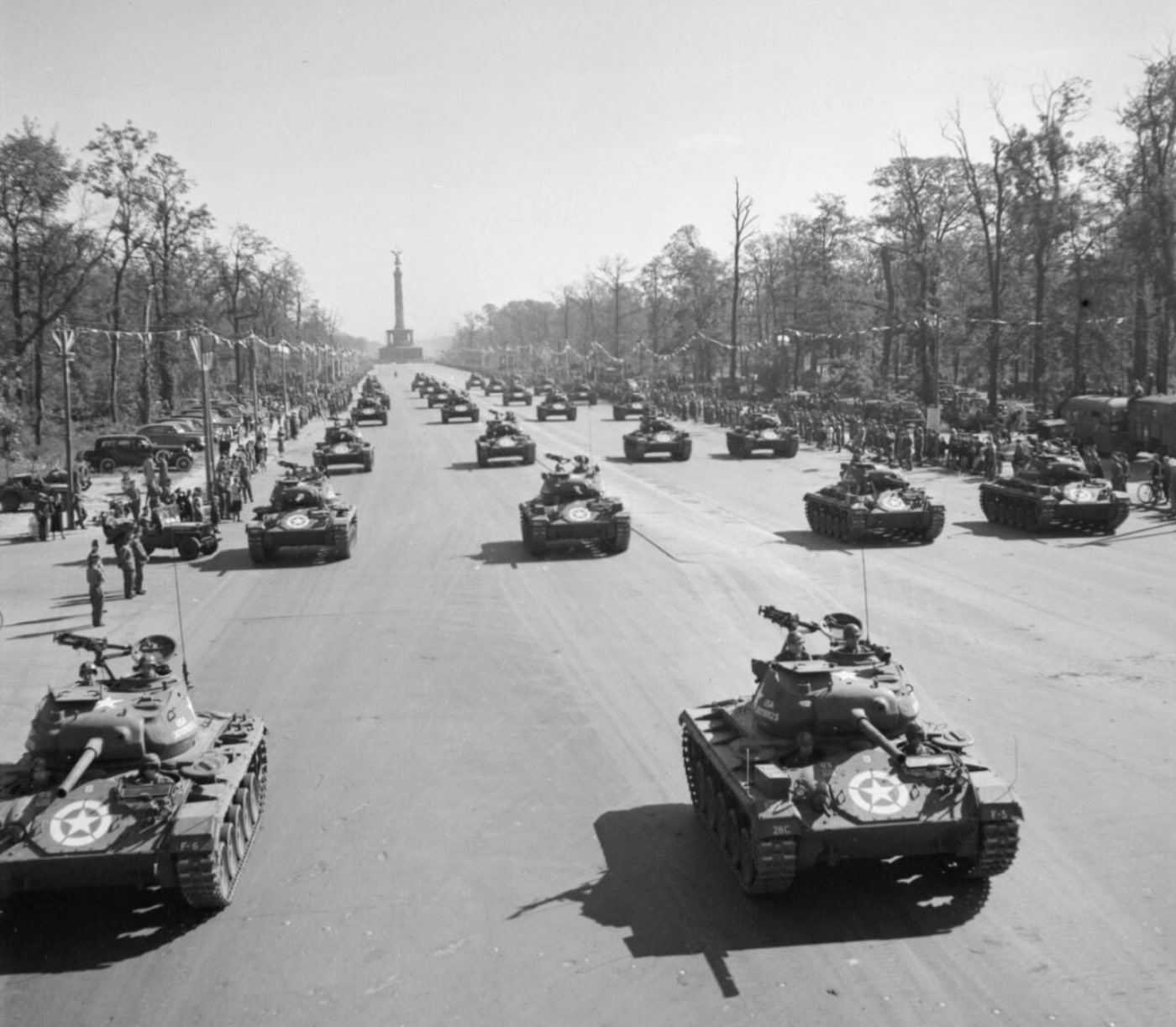
A group of 10 M24 light tanks were disassembled and flown piecemeal into Indochina to support the beleaguered French forces holding out at Dien Bien Phu in the Spring of 1954. These 10 tanks ultimately fired some 15,000 rounds before finally being overwhelmed five months later. Some 66 Pakistani Chaffees were lost as late as 1971 in the Indo-Pakistani War. Indian T-55 tanks and PT-76 amphibious tanks had the older Chaffees badly outmatched.
Ruminations
We have all seen the M24 Chaffee in action in the 1965 big screen epic Battle of the Bulge. The filmmakers took great liberties with both the original story and the vehicles involved. They used M24 Chaffees as M4 Sherman analogs and Spanish M47 Pattons in lieu of German Panthers and Tigers.
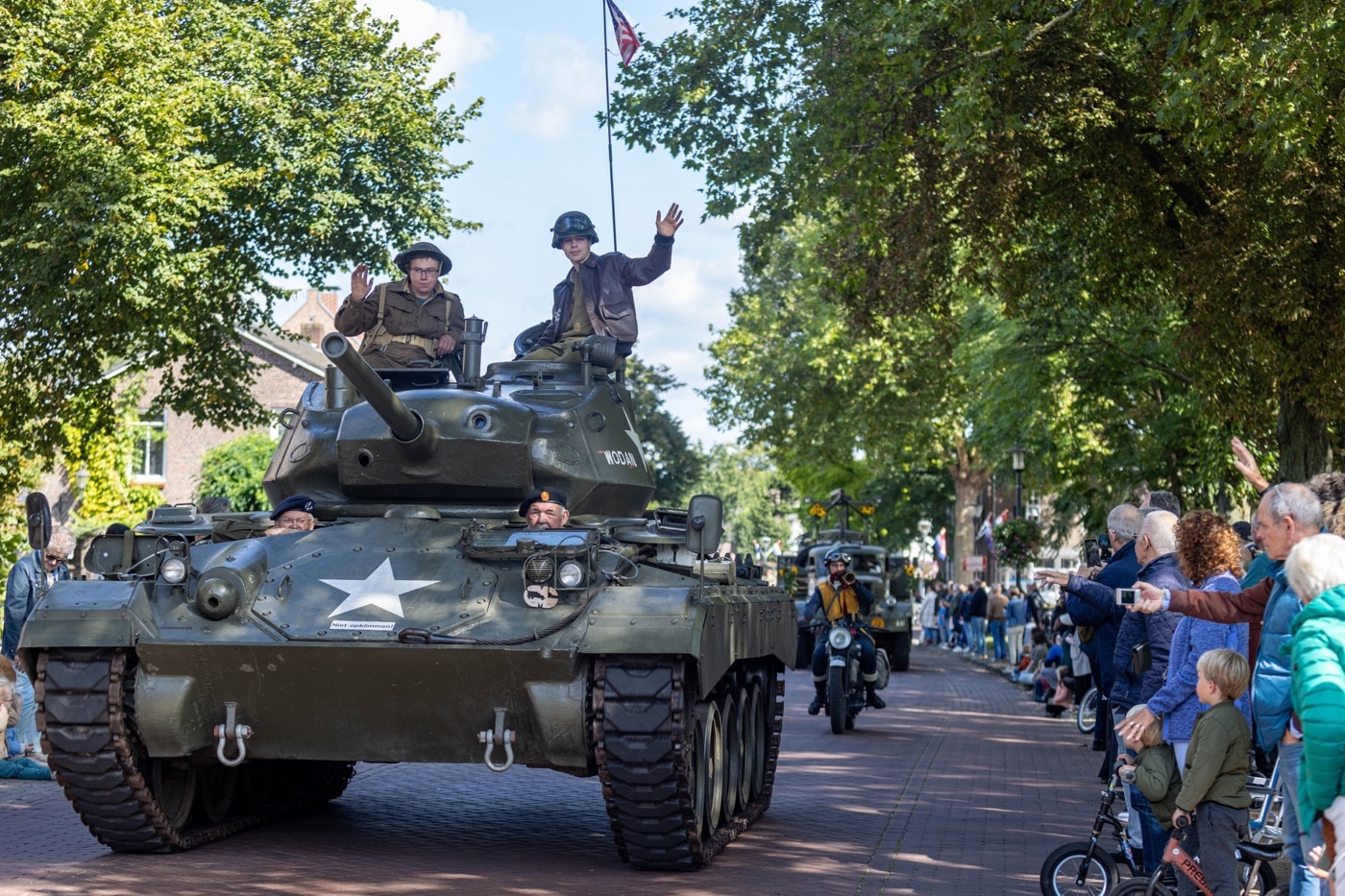
The M24 Chaffee was born in the crucible of combat. It reflected unproven technology and was thrown into action as quickly as possible. Despite the circumstances, the Chaffee was nonetheless still, in my opinion, the most effective light tank of the war.
Editor’s Note: Please be sure to check out The Armory Life Forum, where you can comment about our daily articles, as well as just talk guns and gear. Click the “Go To Forum Thread” link below to jump in and discuss this article and much more!
Join the Discussion
Read the full article here







